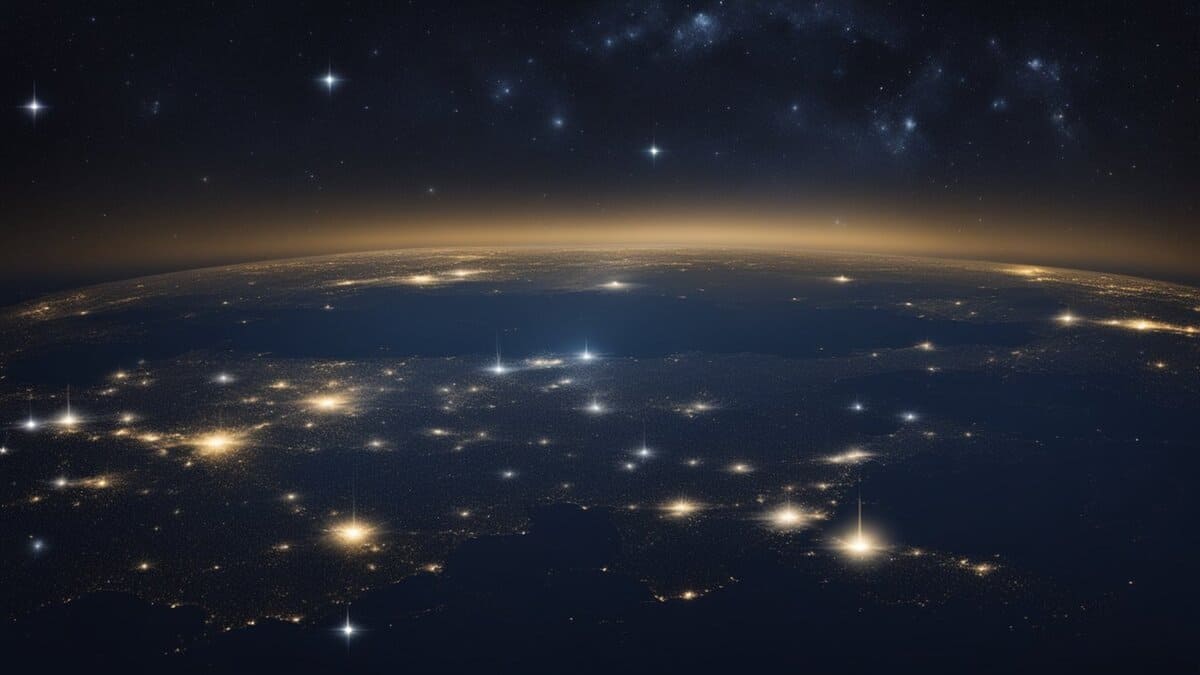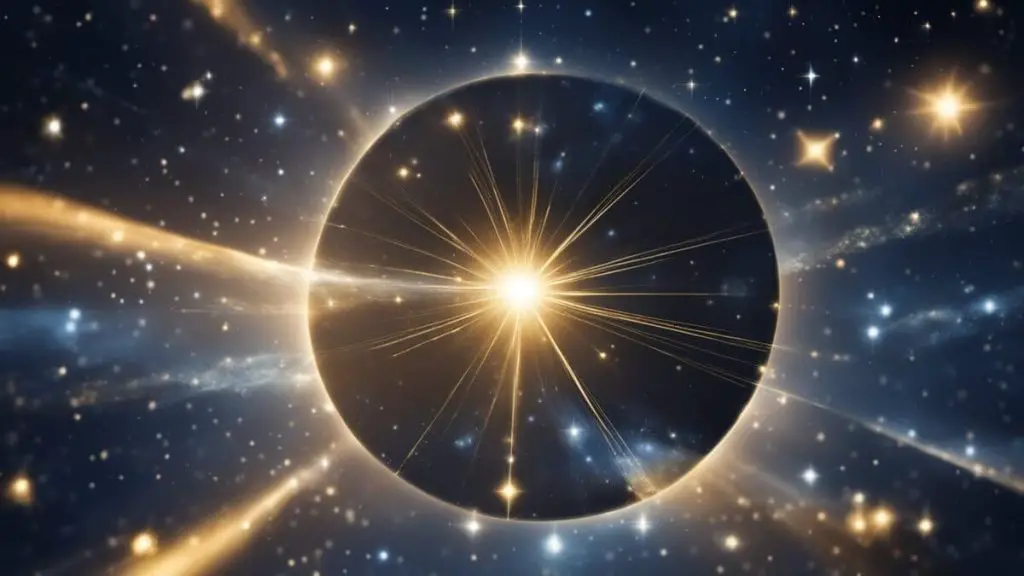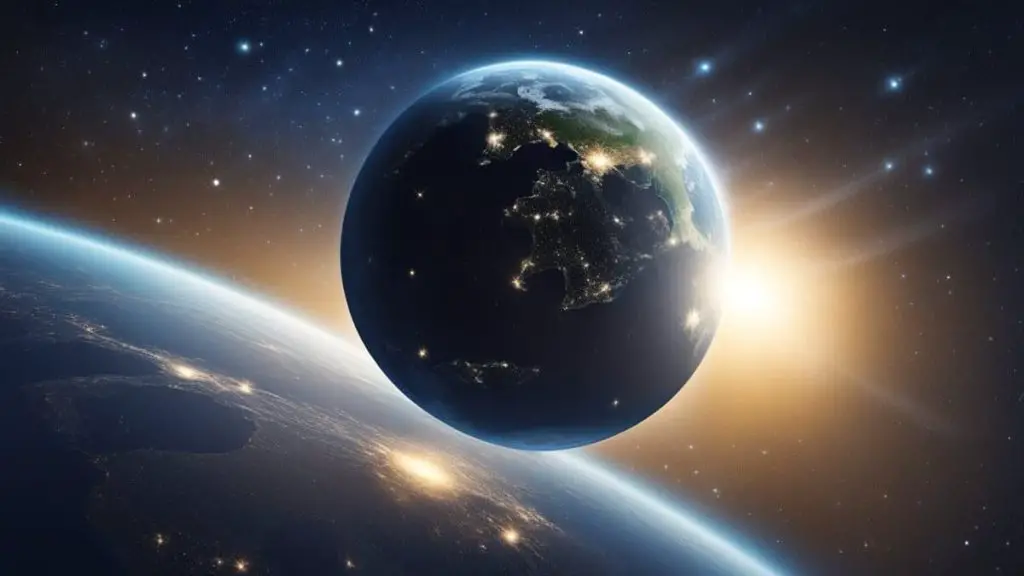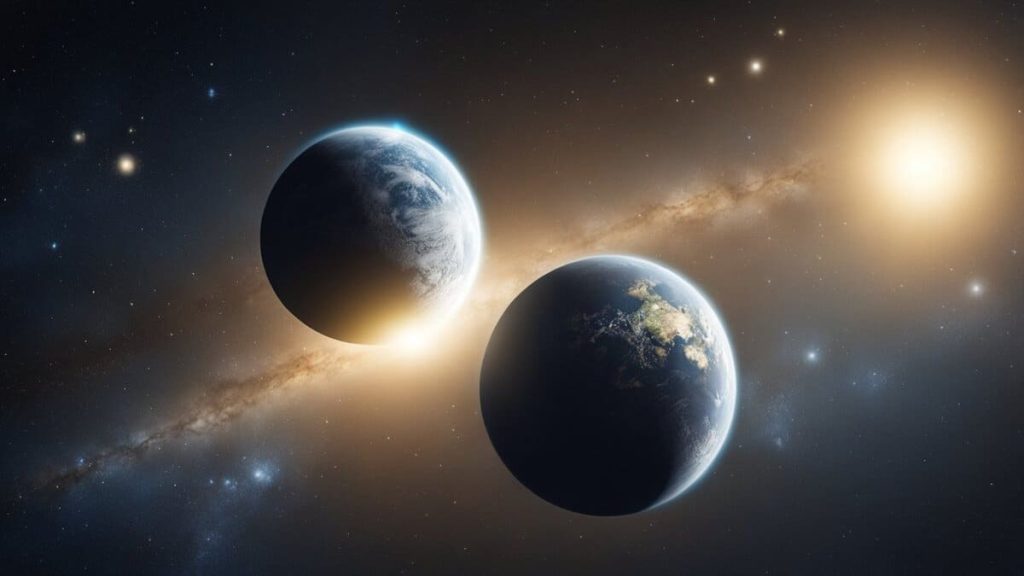Observing the night sky, you might wonder if that bright point is a star or a satellite. This curiosity is common among stargazers.
However, distinguishing between these celestial and manufactured objects can be challenging without knowing their fundamental differences.
In this article, I’ll guide you through understanding the fundamental differences between stars and satellites, equipping you with the knowledge to confidently identify them.
Key Things to Know:
- Stars create their own light and exist far in the universe, while satellites reflect sunlight and orbit Earth.
- Satellites serve for communication, navigation, and observation, significantly impacting our daily lives.
- Understanding orbital mechanics and the physical traits of stars and satellites enhances stargazing experiences.
Recommended For You
Fundamental Difference Between a Star and a Satellite

When I first started stargazing, I often looked up at the night sky, wondering if a bright object was a star or a satellite.
Let’s break it down.
Stars are massive balls of gas that are very far away. From my observations, stars emit a steady glow unlike anything else in the night sky. They produce their own light and heat through nuclear reactions. Our Sun is a star, the center of our solar system. Stars can live for billions of years.
In contrast, satellites are much closer to Earth. I’ve tracked satellites with my telescope and noticed a distinct movement across the sky. They are manufactured objects that we send into space to orbit Earth. They don’t make their own light; they reflect sunlight. That’s why you can often see them right after sunset or before sunrise.
Here’s a quick list to sum it up:
- Stars:
- Make their own light.
- Far away in the solar system.
- Live a long time.
- Satellites:
- Reflect sunlight.
- Orbit the Earth.
- Manufactured.
So, next time you spot a bright light gliding across the sky, you can bet it’s probably a satellite because stars don’t zip across the sky like that. Remember, satellites move, but stars remain more or less still in the sky.
In my nights of observation, I’ve seen how satellites move rapidly compared to the static twinkle of stars. Keep looking up, and you’ll start to spot the difference between these twinkling objects on your own!
FREE STARGAZING CHECKLIST
My 5-page Stargazing Checklist will enhance your astronomical observations.
Follow this free checklist to navigate the night sky with confidence, clarity, and a sense of preparedness for a rewarding stargazing experience.

Physical and Orbital Characteristics

In space, everything from tiny satellites to massive stars has unique features and paths they follow. Understanding these can help you grasp the vastness of space.
Composition and Structure
- A star is a massive ball of hydrogen and helium gas undergoing nuclear fusion.
- Satellites, like Earth’s Moon and manufactured ones, are composed of various materials. Natural ones are mostly rock and metal, while manufactured satellites are built with metal and advanced composites.
Size and Distance
- Stars are gigantic; for example, our Sun’s diameter is about 109 times that of Earth.
- Satellites are much smaller; they can be as big as a bus or as tiny as a suitcase.
- Stars like our Sun are millions of miles from Earth, while satellites orbit from just over 100 miles to 22,000 miles above us.
Orbital Mechanics
Understanding how objects move in space depends on gravity.
Here’s what you need to know:
- Orbits are the paths that satellites, moons, and planets take around bigger bodies due to gravity.
- A satellite must move at the right speed to balance Earth’s pull. If it moves too slowly, it falls back to Earth; if it moves too fast, it could shoot off into space.
Satellites can orbit Earth in different ways, such as:
- Geostationary orbits match Earth’s rotation and stay over one spot.
- Polar orbits pass over the north and south poles, covering the entire Earth over time.
Roles and Functions

Looking up at the sky, you might wonder about the twinkling stars and the satellites gliding silently across the night. Stars have been around for billions of years, while humans have made satellites part of our daily lives more recently. Each has a distinct role: stars like the Sun are natural power sources, while satellites are tools that serve specific functions here on Earth.
Scientific and Research Purposes
Satellites give scientists tons of important data. NASA uses satellites with special sensors to study Earth’s climate and space. Did you know astronomers rely on satellites to peek at distant stars and galaxies? They can’t do this as well with just telescopes on Earth because our atmosphere blurs the view.
Satellites for Science
- Climate studies
- Space exploration
- Helping telescopes see further
Communication and Navigation
You use satellites every day and might not even know it. Reflecting on my daily life, it’s fascinating how much I rely on satellites for everything from weather forecasts to GPS navigation.
They’re essential for your phone calls and TV shows! Communications satellites have big antennas that catch and send signals from one place to another. Satellites even help you get around town. They power the GPS on your phone – the Global Positioning System. Without GPS, you’d have a more challenging time finding new places.
Satellites Help You With
- Talking to friends far away
- Watching your favorite shows
- Not getting lost on your adventures
Observation and Surveillance
Satellites are like the Earth’s high-flying security cameras. Observing satellites through my telescope, I marvel at their role as Earth’s guardians, monitoring our planet’s health.
They observe the ground below for many reasons. Some watch the weather to keep you safe from storms. Others might be checking to see how crops grow or finding places where the Earth changes. Surveillance satellites can stay powered up there because they have solar panels that turn sunlight into their power source.
What Satellites Keep an Eye On
- Storms brewing up
- Farms growing food
- Changes in the Earth, like melting ice
Impact on Earth and Society

Looking up at the sky, it’s filled with stars and satellites. Whenever I gaze at the night sky, I remember the incredible dance between natural and human-made celestial objects.
These celestial objects do more than twinkle; they affect our world and lives.
Climate and Environment
- Satellites help you understand the climate and environment by watching Earth from space.
- TIROS-1, the first weather satellite, began this work long ago.
- Today, satellites track carbon dioxide levels and detect wildfires and volcanoes.
Advancements in Technology
- Thanks to artificial satellites, you’ve got GPS and fast internet. Isn’t that cool?
- They help emergency workers reach people during a crisis.
- Spacecraft visiting places like Mars and Saturn send back knowledge for your tech devices.
Public Health and Safety
- Fighting light pollution makes the sky clearer for everyone, including star-gazers like you.
- Cleaner skies mean less disruption to Earth’s atmosphere.
- You and public health benefit when the clean air and the night sky are dark.
Exploration and Expansion

In this section, we’ll dive into how space expansion and exploration push the boundaries of what we know, from the tools we use to the missions that take us beyond Earth.
The Future of Space Exploration
Space exploration is entering a new era, with private companies like SpaceX making trips to space more common. Soon, we might see more happenings in low Earth orbit, with Starlink, SpaceX’s satellite project, improving global internet coverage.
Here’s how this can change things for you:
Interplanetary Missions
Rockets are more robust and reliable now, so we can send orbiting satellites and robots much farther. They’re our eyes and hands in space, looking closely at places like Jupiter.
Here’s what’s happening:
- Rockets take machines beyond our planet to send information about cosmic rays and black holes.
- Remember Explorer 1? It was the first US satellite, telling us a lot about space. Now, we’re planning even cooler missions to understand the secrets of our solar system.
Observing and Understanding the Cosmos

When you look up at the night sky, you’re not just seeing stars; you’re witnessing a vast cosmic arena that includes natural and manufactured objects. How these celestial bodies appear from the ground can tell us much about our universe.
Stargazing and Celestial Events
The key to enjoying the night sky is understanding what you’re seeing.
Here are some quick tips to improve your stargazing experience:
- Choose the right location: Find a spot away from city lights for the best view.
- Less light pollution means more stars are visible to the naked eye.
- Check the weather: Clear skies are a must.
- Even the brightest stars and satellites won’t be visible if it’s cloudy.
- Know when to view: Some celestial events happen at specific times.
- Check a stargazing calendar to plan your viewing.
Amateur and Professional Astronomy
Observing the skies can be amazing whether you’re a hobbyist or a pro.
To start your journey into astronomy, remember these basics:
- Use binoculars or a telescope to see details you can’t see with the naked eye.
- Track the movement: Satellites move differently than stars. They don’t twinkle and tend to move steadily across the sky.
- Capture what you see: With a camera and long exposure settings, you can take stunning pictures of the stars.
Astronomy can connect you with the history of explorers who’ve navigated and studied the skies for centuries.
When satellites and stars cross the same view, it reminds us how far we’ve come and what’s still out there to discover.
Frequently Asked Questions
How can I tell the difference between a star and a satellite without a telescope?
By observing its movement, you can distinguish a star from a satellite without a telescope. Stars appear as fixed points of light, whereas satellites move steadily across the sky over a few minutes.
What’s the best time to observe satellites?
The best time to observe satellites is shortly after sunset or before sunrise. This is when the Sun’s light reflects off satellites, making them visible against the darker sky.
Can I use smartphone apps to identify stars and satellites?
Yes, you can use smartphone apps to identify stars and satellites. These apps utilize your phone’s GPS and compass to provide real-time identification of celestial objects as you point your phone toward the sky.
TL;DR
- Stars are natural, luminous bodies that produce their own light, while satellites are manufactured objects orbiting Earth, reflecting sunlight.
- Satellites serve various purposes, including communication, navigation, and environmental monitoring, impacting our daily lives.
- Understanding stars’ and satellites’ physical and orbital characteristics enhances the stargazing experience.
- Observing satellites requires looking shortly after sunset or sunrise when they visibly reflect sunlight.
- Smartphone apps can help identify and distinguish between stars and satellites in the night sky.
Your curiosity fuels our journey through the cosmos together. I may not have all the answers, but I’m eager to explore your questions and thoughts. Please share them in the comments below, and let’s keep the conversation about the stars and satellites spinning.




